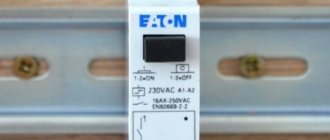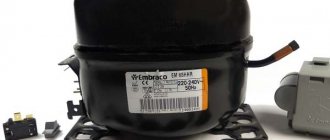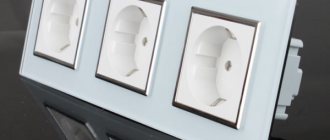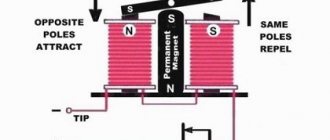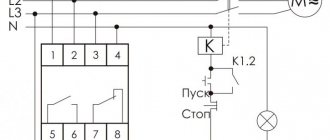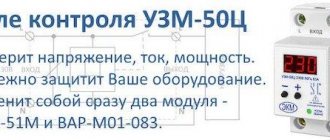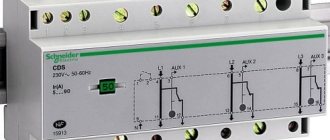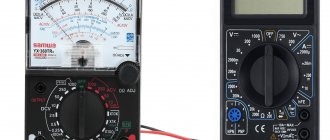How to turn a “minus” into a “plus” and vice versa? How to hook up to an electric drive? How to open the trunk with the alarm key fob? How to block the engine from starting? There is an answer to all these questions: using a relay.
Knowing how a relay works, you can implement various connection schemes to the car's electrical wiring.
Usually the relay has 5 contacts (there are also 4-pin and 7-pin, etc.). If you look at the relay carefully, you will see that all contacts are signed. Each contact has its own designation. 30, 85, 86, 87 and 87A. The figure shows where and what contact is.
Pins 85 and 86 are the coil. Contact 30 is a common contact, contact 87A is a normally closed contact, contact 87 is a normally open contact.
At rest, i.e., when there is no power to the coil, contact 30 is closed with contact 87A. When power is simultaneously supplied to contacts 85 and 86 (one contact is “plus” and the other is “minus”, no matter where it is), the coil is “excited”, that is, it is triggered. Then contact 30 is disconnected from contact 87A and connected to contact 87. That’s the whole principle of operation. It seems to be nothing complicated.
A relay often comes to the rescue when installing additional equipment. Let's look at the simplest examples of using relays.
Engine lock
The blocked circuit can be anything, as long as the car does not start if the circuit is broken (starter, ignition, fuel pump, injector power, etc.).
We connect one coil power contact (let it be 85) to the alarm wire, on which a “minus” appears when arming. We apply +12 Volts to the other contact of the coil (let it be 86) when the ignition is turned on. Contacts 30 and 87A are connected to the break in the blocked circuit. Now, if you try to start the car with the security switched on, contact 30 will open with contact 87A and will not allow the engine to start.
This scheme is used if you have a “minus” from the alarm to blocking when arming. If you have a “minus” from the alarm to blocking when disarming, then instead of contact 87A we use contact 87, i.e. The open circuit will now be on pins 87 and 30. With this connection, the relay will always be in working condition (open) when the engine is running.
Opening the trunk using the car alarm key fob
If your car has an electric trunk drive, you can connect to it with a car alarm to open it using the alarm key fob. If the alarm outputs a low-current signal to open the trunk (and most often this is the case), then we use this circuit.
First of all, we find the wire to the trunk drive, where +12 Volt appears when the trunk is opened. Let's cut this wire. We hook up the end of the cut wire that goes to the drive to pin 30. We hook up the other end of the wire to pin 87A. We connect the alarm output to contact 86. We connect contacts 87 and 85 to +12 Volts.
Installing a relay in the engine compartment
Unlike the first method, here all the work on installing signals and wiring will be under the hood. The same material will be used, you just need to buy:
- Hanging fuse (like from a mafon-16A) - 25r
- Terminals mother-8pcs-10rub
- Plastic corrugation 2 meters - 8 rubles
We place the horns from the Volga in any convenient place (as in the first option), and connect the wiring according to any of the diagrams: In the first scheme, we take “Plus” for the signal from the fuse block, through its fuse, and in the second scheme we take “Plus” immediately with battery, through a separate 20A fuse. It is best to use the second circuit to connect horns from the Volga to a VAZ 2110. It is better to place the relay where there is the least chance of moisture getting in. Before doing this, it is good to insulate the relay or wrap it in a bag. The installation procedure is approximately this:
- Using the “8” key, unscrew the 2 bolts securing the radiator grille and unsnap the 2 lower latches, remove the grille!
- Removing the standard sound signal
- Assembling the wiring according to the diagram
- We isolate all connections, and put the wire that connects the signals to each other into a corrugation (so as not to rub against the radiator)
- We attach the relay in a suitable place
- Putting back the radiator grill
Video signal from Volga to VAZ 2110
Legislation
Before practicing installing DRLs, I would like to dwell a little on the legal standards for installing DRLs, as well as the rules of their operation.
The very first and basic rule is that unauthorized installation of additional light signals on a car is prohibited. Yes, you are right, you do not have the right to install DRLs on your car if it was not equipped with them by the manufacturer. This will be considered as making changes to the design of the vehicle. For every change to a vehicle's design, a certificate must be obtained, which in itself is neither quick nor cheap. Otherwise, traffic police officers will issue you a fine, or even take your car to the impound lot.
How so? My neighbor installed DRLs on the Oka and drives calmly! - you ask. He is simply lucky to have loyal traffic police officers who do not pay attention to his DRL - I will answer you.
Once again, unauthorized installation of additional light signals on a car is prohibited if it was not equipped with them by the manufacturer. Therefore, you make any changes to the design of the vehicle at your own peril and risk. It’s a completely different matter if your car’s equipment does not include DRLs, but the more expensive trim levels of your model do have DRLs. In this case, you have the right to install DRL without any approval from the certifying authorities.
The first rule for installing DRLs concerns their location on the car body (see picture). If we briefly describe this figure, we get the following:
- DRLs should be installed at a height of 250 to 1500 mm;
- The distance between adjacent edges of the DRLs must be at least 600 mm;
- The distance from the outer side surface of the vehicle to the nearby edge of the DRL should be no more than 400 mm.
Now let’s briefly go through the rules of operation and use of DRLs:
- DRLs should only be used during daylight hours;
- It is prohibited to use DRLs in conjunction with side lights, low and high beam headlights, as well as fog lights.
Everything that is not prohibited is permitted. It's that simple. Separately, I would like to dwell on an important point, it concerns the use of DRLs in conjunction with high beam headlights. The rule goes something like this: When the high beam signal is briefly signaled, with the side lights and low beam headlights turned off, the DRLs should not turn off. Let me break it down: you are driving with your headlights and side lights turned off, your DRLs are on, when you signal with your high beams to an oncoming car that you are approaching a traffic police post, your DRLs should not turn off.
Just? I also think that there is nothing complicated here. Knowing the legislation and rules for using DRLs, we are ready to move on to the practice of connecting them. Let's start with the simple and incorrect and end with the complex and correct. Go!
DRL connection diagram without relay
This is the simplest DRL connection diagram, but also the most incorrect. I'll describe it a little. With this connection scheme, you supply voltage to the DRLs from the main power circuit of the car. The main power circuit is activated when the key is turned in the ignition switch. Obviously, your DRLs will always work as long as the key is turned in the ignition, no matter what lighting you use. You have no way to turn off the DRLs until you remove the key from the ignition.
As you already know, the use of DRLs in conjunction with other lighting devices is prohibited. I do not recommend connecting DRLs using this scheme.
Installing a protective diode in a relay type 98.3777
Forming output A of the diode
And solder at 4 points
Conclusion
In the review, I tried to systematize all the ways I know of connecting DVRs and choose the method that most fully meets my requirements.
It’s surprising that no one tried to connect this way, at least I couldn’t find anything on the Internet on this topic. This method suits me because I am used to always wearing my seat belt, even as a passenger in a taxi, and my car has a belt sensor. In general, the implementation of the connection from the driver’s seat belt turned out to be quite simple and more than budget-friendly - a pair of relays and a pair of diodes, $3 for everything. In a minimal operating configuration, you can generally get by with one relay and one diode. Pros:
- Turning on a car DVR from the driver's seat belt is the most budget-friendly automated connection: a 5-pin car relay costs about one and a half dollars in any offline car store and $1.25 with free shipping on Ebay.
- Turning on a car DVR from the driver's seat belt is the most affordable automated connection: a 5-pin car relay is available in any offline car store if you don't want to wait from abroad.
- Turning on the car DVR from the driver's seat belt is the most automotive connection: car relays, by definition, are designed for use in a car. No terminal blocks or other bolted connections that require periodic inspection. This automotive relay is structurally designed for connection with vibration-resistant terminals of the VRPI type.
- When the ignition is turned off, the relay windings are completely de-energized - this is a feature of the proposed circuit. Firstly, it is safe and, secondly, battery energy is not consumed when the car is parked to power the circuit. Moreover, in the mode of supplying power to the DVR with a simultaneous break in the belt warning circuit, the proposed circuit does not consume anything, because The voltage from the windings is removed.
- Crank the starter in winter until you turn blue. It does not matter. Only one thing matters: until you buckle up, the DVR will not turn on.
- Forget about delay relays. They are no longer needed. You only need to remember one thing - until you buckle up, the DVR will not turn on.
- Generator problems? Your dash cam will still work as long as you are wearing your seat belt and the ignition is on.
- Have you been in an accident and the engine stalled? Your dash cam will still work as long as you are wearing your seat belt and the ignition is on.
- Do you need to get out of the car/go to the store/park and leave the DVR running? Press the button to manually turn on the recorder (see the diagram at the beginning of the review), unfasten and go. The recording will not be interrupted.
Minuses:
- Not suitable for those cars that do not have a seat belt sensor.
- Not suitable for “tough guys” who drive unfastened (who either have a belt constantly inserted or a plug).
Thank you for your attention and I wish you all a pleasant weekend!
DRL connection diagram via 4-pin relay
To connect the DRL according to this scheme, you, as in the previous case, will need a 4-pin relay. Moreover, the connection diagram is absolutely identical to the previous case, only instead of the control signal from the oil pressure sensor, we will use a button in the car interior. Your DRLs will only turn on when you press a button in the cabin.
You can add a little automation to this scheme. In order for the DRLs to go off when the engine is stopped, you can send a signal to the button from the fuel pump, or from the same oil pressure sensor. This scheme already has the right to life, because you can control the DRL operation depending on your driving conditions.
The only downside is that you need to manually turn off the DRLs (press a button in the cabin) when you turn on the low beam headlights, and also manually turn on the DRLs when driving during daylight hours.
Order Yandex Taxi
Both schemes have a common drawback.
No one is safe from accidental short circuits during installation and operation!
Domestic relays of this series mark a normally closed contact as When the fastening parts melt, the contacts move and a sparking process is added, which further heats the contact point. If I made a mistake anywhere, please write and I will correct it.
The relay current is 30 A, it is possible to use and After applying a control signal to the relay, the first output will become open and the second closed. In this case, they should automatically turn off if the headlights are turned on.
Fill out the form, the answer will be sent by email
All powerful consumers of electricity in the car, such as headlights, starter, fuel pump, heated rear window, electric power steering, are connected through a relay. This circuit design solution has several disadvantages: the running lights remain on when the engine is turned off, which is contrary to current rules; the circuit will not work if LEDs are also installed in the dimensions; the circuit will not work correctly if the DRLs contain powerful SMD LEDs, the rated current of which is comparable to the current of a light bulb; For safety reasons, an additional fuse must be installed. When the voltage disappears, the armature returns to its normal state using a return spring.
DRL control unit Nuances of turning on the running lights The basic requirements regarding installation, technical parameters and connection of the running lights are listed in paragraph 6. Connection diagram for DRLs via a 4-pin relay To connect DRLs according to this scheme, you, as in the previous case, will need 4 contact relay. When choosing a relay, you need to pay attention to the coating of the relay contacts and the connector where the relay is inserted. Therefore, a connection is made through a relay between the button and the starter; a relay is installed, which, based on a small current impulse from the button, closes powerful contacts within itself, thereby turning on the starter.
When current is applied to the coil, magnetic field lines penetrate its core. How to connect a four-pin relay How to correctly connect a 4-pin relay. In the normal state, the first of the power terminals is closed, the second is open.
We only note that the most common: The relay is designed for switching large load currents. With this connection scheme, you supply voltage to the DRLs from the main power circuit of the car. In order for the DRLs to go off when the engine is stopped, you can send a signal to the button from the fuel pump, or from the same oil pressure sensor. Below you will find information from one manufacturer; there are other manufacturers and foreign analogues. how to connect a car relay (light ignition, etc.)
Connection diagram for DRL via 5-pin relay
This scheme is the most correct and automated; I recommend connecting the DRLs according to this scheme. This circuit uses a 5-pin relay. Let's talk a little about the operating principle of a 5-pin relay. The 5-pin relay has 2 power outputs. In the normal state, the first of the power terminals is closed, the second is open. After applying a control signal to the relay, the first output will become open and the second will become closed. This seems complicated, but let's look at an example and everything will become clear.
- Contacts 85 and 86 are control contacts. Depending on whether there is voltage on them or not, contacts 87 or 87A close;
- Contact 30 – power supply contact of the relay. It is to this that voltage must be supplied to power consumers;
- Contacts 87 and 87A – contacts for connecting consumers.
Let me give you an example. There is no voltage on contacts 85 and 86; power through the relay goes to the consumer at contact 87A. There is voltage on pins 85 and 86, the relay switches power to the consumer on pin 87.
- We supply power to the DRLs and headlights through pin 30. For greater automation, take power from the main circuit of the car, which turns on when the ignition is turned on;
- We connect DRLs to contact 87A, which will always be on;
- We connect the headlights to pin 87, which will turn on only when the DRLs are turned off;
- To contacts 85 or 86 (it doesn’t matter), we apply a control signal from the headlights button in the cabin;
- We connect the remaining contact 85 or 86 to the car body.
With this connection, either the DRLs or the headlights may work. When the car is turned off, both the DRLs and headlights are turned off.
- Price: $1.66
- Go to the store
In today's review, I will share with you my impressions of a 5-pin automotive relay purchased on eBay, and also show one of the possible options for its use.
The relay was ordered almost simultaneously with the DRL kit that I talked about a few days ago. For what? Because when using a standard connection, when turning on the side lights or low/high beams, the DRLs still continued to light up. I didn’t find anything good in this, and therefore I began to think about automating their shutdown when turning on the headlights or low beam. The simplest and most logical option seemed to me to be using a relay.
By the way, this is one of the few purchases that I went to the local auto parts store before making. Imagine my surprise when I saw the price in the VAZ store: relay - 5 rubles (about $2.5), a block for it - 2.5 rubles ($1). Total, $3.5 per set offline with us without waiting, versus $1.66 with them. The choice is obvious
